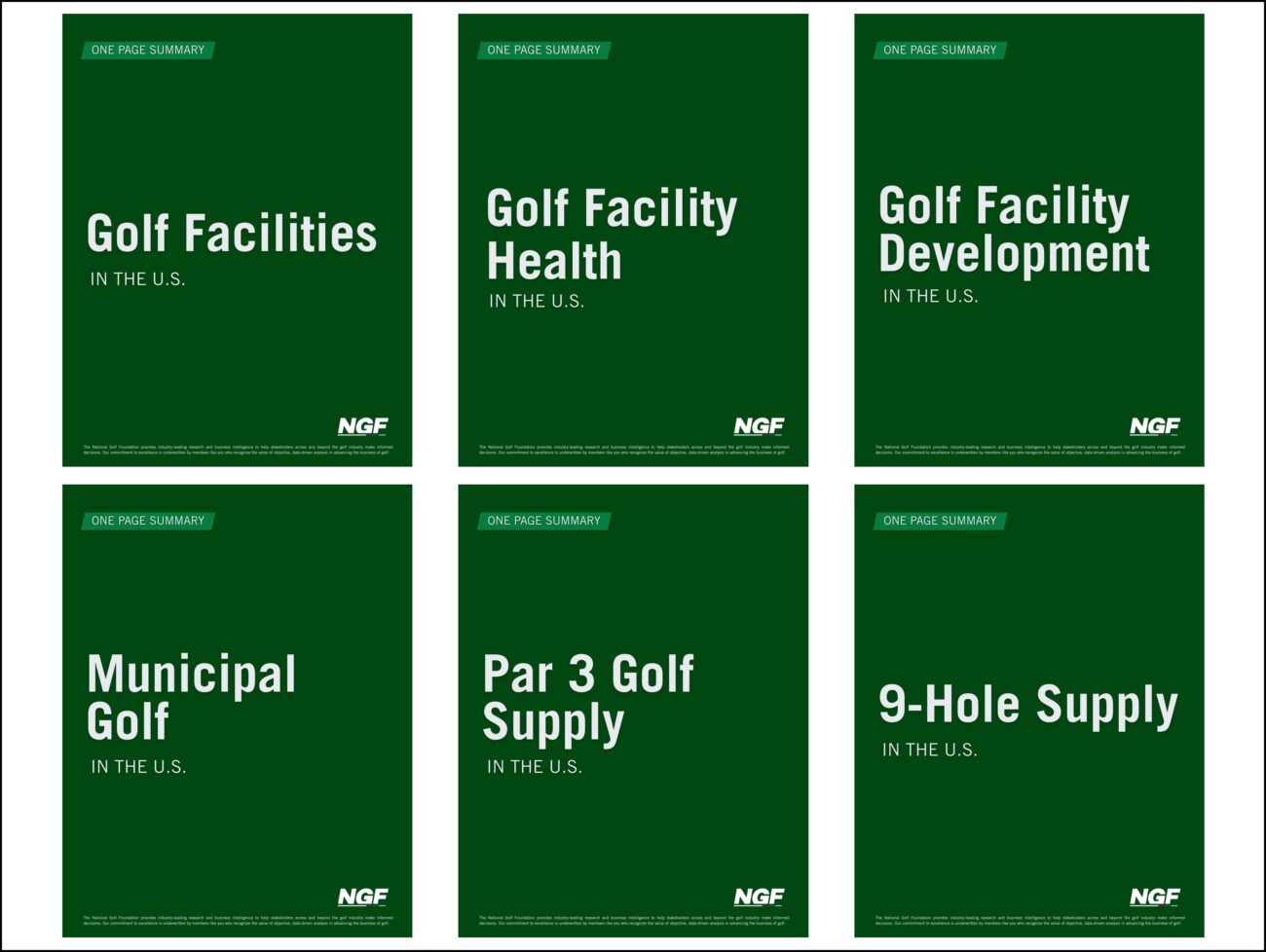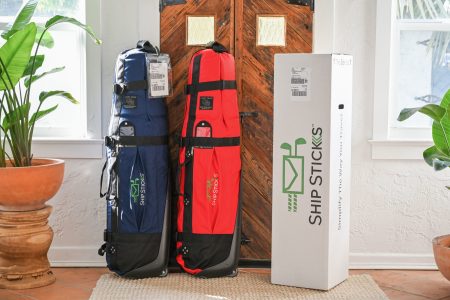As a benefit to members seeking information on a particular subject, NGF has created a collection of concise and comprehensive one-page summary reports that contain detailed information on a variety of U.S. supply-related topics.
These “one-pagers” are complementary to the annual Golf Facilities in the U.S. Report.
Summary Reports include:
Golf Facility Supply — an overview of the world’s best-supplied golf market from 2019 through 2024, including high-level details on facility segments (type, # of holes and green fees), openings & closures, and the states with the most courses.
Golf Facility Health — an overview of the latest U.S. facility financial health survey, with comparisons to previous versions of a similar survey from past years. It includes self-reported feedback from owners and operators, and highlights where the industry is currently positioned — in both the public and private sectors.
Municipal Golf — an overview of the municipal golf sector, including total supply through the years, a brief history, a list of select benefits of municipal golf, details on green fees, facilities by number of holes and state, and more.
U.S. Golf Development & Construction — Golf development has been on the rise in recent years, although at a more moderate rate than the well-chronicled jumps in participation and play during the game’s post-pandemic renaissance. Detailed in this summary are the number of U.S. golf courses under construction or in-planning, as well as projects by state, and a broad development summary by type as well as the trend in new course openings.
9-Hole Golf Supply — There are more than 3,600 nine-hole golf facilities in the U.S., more than any other country in the world has in total. And until the 1970’s, nine-hole courses outnumbered 18-holers in the world’s best-supplied market. This summary looks at trends and overall supply in the 9-hole category.
Par 3 Golf Supply — Par 3 courses have accounted for almost 40% of new course development over the past decade, with a number of highly-visible examples at resort properties. And yet these short courses represent just 4% of overall supply, with more Par 3 course closures over the past two decades than closings among regulation-length courses. This overview examines overall Par 3 supply and recent trends.




